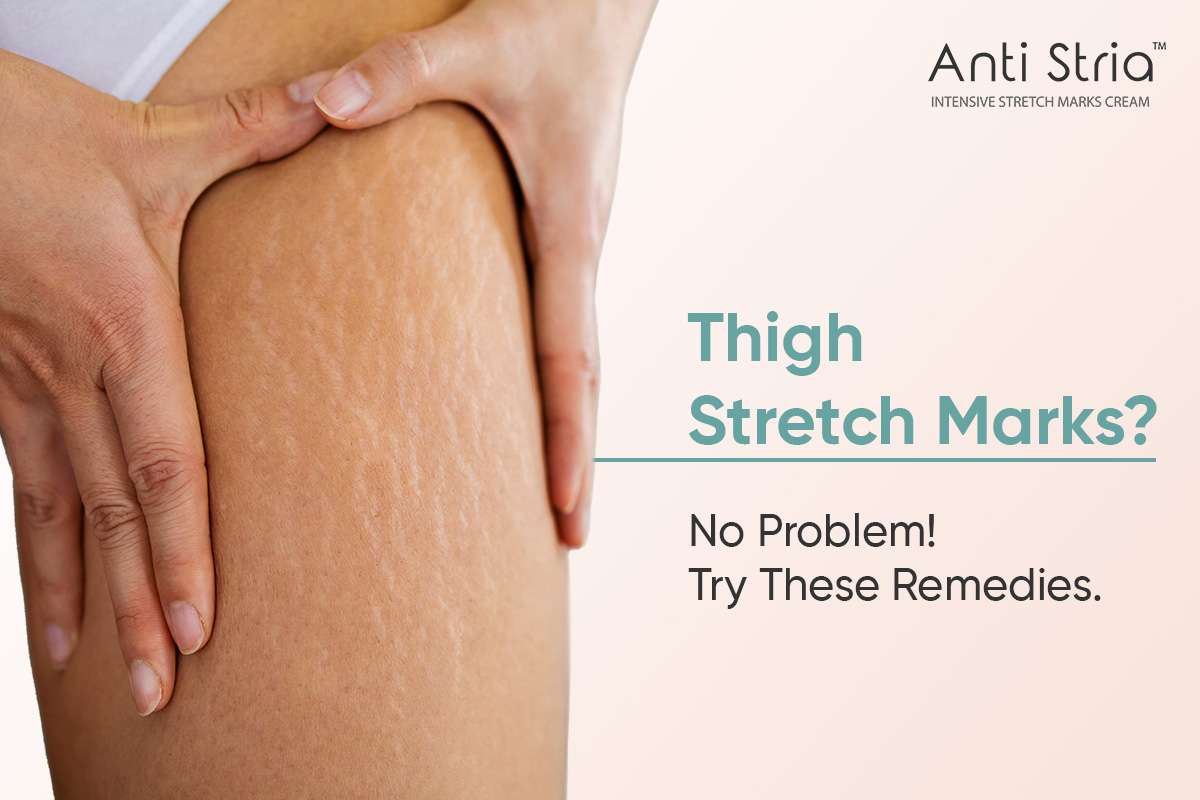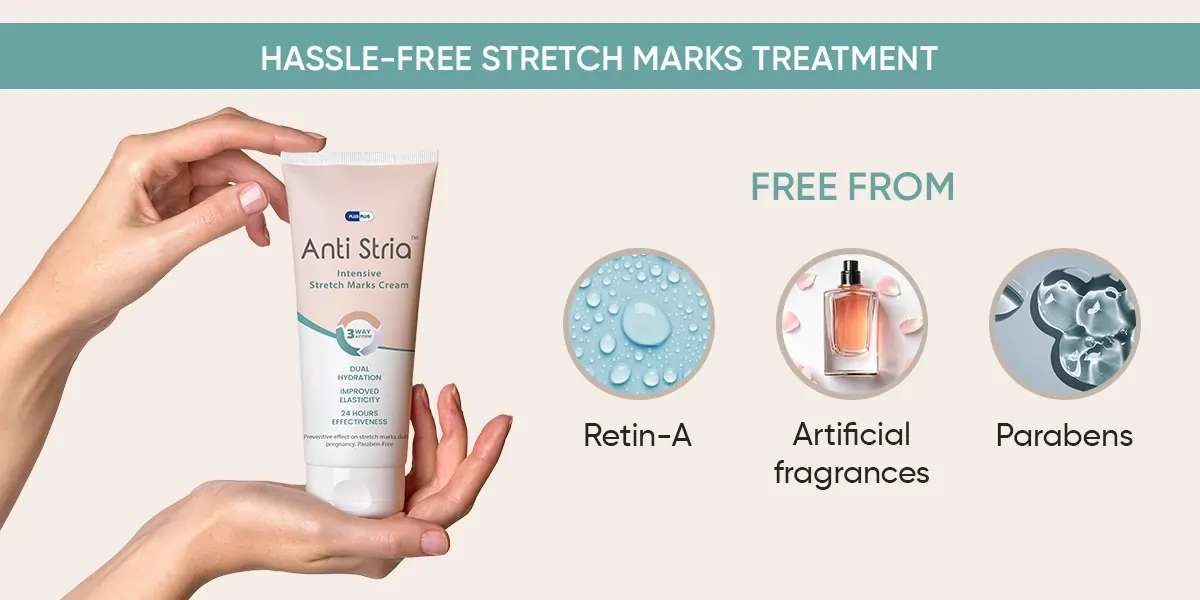Thigh Stretch Marks, caused by weight, growth, or hormonal changes, can affect individuals’ confidence and self-esteem. However, with proper knowledge and strategies, managing and minimizing their appearance is possible. “Smooth Solutions” offers best practices, treatments, and preventive measures to achieve smoother, more resilient skin on thighs. Leg stretch marks treatments include topical treatments, moisturization, and laser therapy, which stimulate collagen production and promote skin regeneration.
UNDERSTANDING THIGH STRETCH MARKS:
Thigh stretch marks are a common dermatological issue affecting people of all ages and backgrounds. They appear as streaks or lines on the skin’s surface, ranging from red to silver or white, depending on age and severity. Leg stretch marks occur mostly during growth spurts, weight changes, or hormonal shifts Leg stretch marks occur mostly during growth spurts, weight changes, or hormonal shifts. Although they appear normal, leg stretch marks are anxiety-provoking and make people feel self-conscious about themselves. This further impacts the person’s self-esteem and body image negatively. Stretch marks cream and hydration improve the elasticity and texture of the skin and thus fade the appearance of the stretch marks over time.
CAUSES OF THIGH STRETCH MARKS:
Puberty: This is a period of fast growth and hormone change that causes skin stretching and the development of leg stretch marks on different body parts.
Pregnancy: Thigh stretch marks are caused during pregnancy because of the skin elasticity and hormonal changes when the uterus and baby grow.
Weight change: Stretching or shrinking the skin by gaining or losing weight might lead to stretch marks on thighs and other regions of the body.
Genetics: Some people have high tendency to get stretch marks as some types of skins are easily torn and scar when stretched.
Corticosteroid Use: Prolonged or excessive use of corticosteroid medications, whether topical or oral, can weaken the skin’s structure and increase the risk of developing thighs with stretch marks.
Lifestyle: Lifestyle factors like weightlifting or bodybuilding can cause thigh stretch marks due to the expansion of muscles and skin elasticity.
Underlying Medical Conditions: Medical conditions like Cushing’s syndrome and Marfan syndrome can increase the body’s susceptibility to leg stretch marks due to a decrease in collagen and elastin production.
Hormonal Changes: Hormonal changes during puberty, pregnancy, or hormonal therapies can affect skin elasticity and increase the chances of thighs with stretch marks.
Nutritional Deficiency: Leg stretch marks might be developed due to low consumption of essential nutrients, like Vitamins C, Vitamin D, Vitamin E, Zinc, Folic Acid, Omega-3, Protein etc resulting in low elasticity and elasticity.
BEST PRACTICES FOR MANAGING THIGH STRETCH MARKS:
In managing thigh stretch marks, one must engage themselves in the practices of prevention and treatments, for instance maintaining an ideal body weight, using stretch marks treatment cream which contain lactic acid and medical therapies such as laser therapy and microneedling.
Moisturize every day:
Hydrate your skin well to reduce the stretch marks on your thighs. Lotions and moisturizing creams containing lactic acid nourish your skin, make it more elastic, and gradually reduce stretch marks. Application of moisturizer consistently, especially after showering or taking a bath, will visibly improve over time.
Apply Topical Treatments
These will minimize stretch marks as the topical treatments stimulate collagen production, skin regeneration, and texture improvement. Those containing retinoids, peptides, glycolic acid, or alpha hydroxy acids (AHAs) can be exfoliating agents that can turn cells over. Gradually, the previous stretch marks help lower the marks while revealing smoother skin underneath.
Incorporate Massage Techniques:
Regular massage improves the circulatory system and enhances collagen production in the skin to reduce legs stretch marks. Always, when applying moisturizing cream or topical creams around the thighs, give those few extra minutes with the gentle circular motion in a way that increases absorption, relaxation, and rejuvenation of the skin.
Consider Laser Therapy:
Laser therapy is an excellent treatment for the reduction of thigh stretch marks since it will always stimulate the production of collagen while breaking down the scar tissue in one’s skin; thus, you end up with smooth, evenly toned skin.
Be healthy and lead a healthy lifestyle:
A healthy lifestyle is very much associated with maintaining a balanced diet, regular exercise, hydration, and avoidance of smoking. Other topical treatments and therapies may be effective, but a correct diet along with exercise will improve the skin and eradicate thigh stretch marks.
ANTI STRIA STRETCH MARKS TREATMENT CREAM: SMOOTH SOLUTION FOR LEG STRETCH MARKS
ANTI STRIA is a daily stretch mark cream that effectively reduces and prevents stretch marks with a combination of natural ingredients and scientific formulations. Retin-A, parabens, and artificial fragrances-free, ANTI STRIA is safe to use during pregnancy, post-pregnancy, and after weight fluctuations. It is ideal for treating leg stretch marks caused by rapid weight gain or loss, puberty, and bodybuilding.
The non-greasy, non-oily formula deeply hydrates and nourishes the skin, offering superior results compared to traditional stretch mark oils. ANTI STRIA’s unique formula helps to keep skin supple and moisturized, aiding in the treatment and prevention of stretch marks on areas such as the legs and abdomen.
FAQs
Q1. Can thigh stretch marks permanent?
Ans- They fade over time but never disappear. Treatment of stretch marks on the thighs using the right cream or oil will significantly reduce their appearance.
Q2. What causes stretch marks on the thighs?
Ans- Another condition that can cause stretch marks on thighs is rapid gain or loss of weight coupled with hormonal changes that characterize growth spurts and puberty as well as pregnancy. Hormonal changes can also lead to stretch marks due to high-impact exercises like bodybuilding.
Q3. Are thigh stretch marks common in men?
Ans- Yes, men can even get stretch marks on their thighs due to bodybuilding, weight gain, or rapid growth occurring with puberty.
Q4. Do hydration and drinking of water affect stretch marks?
Ans- Kept hydrating, the skin becomes soft and stretchy, which would result in less stretch mark development, but the marked areas would not disappear.
Q5. Do the stretch marks fade on the thighs after a delivery due to pregnancy?
Ans- Most pregnancy-related stretch marks leave over time after giving birth; however, numerous remedies hasten their disappearance.
Q6. Do thigh stretch marks mean it is new or old?
Ans- New stretch marks are mostly red, purple, and dark but, once old, fade into light silvery white.
A Certified Nutritionist with a rich healthcare background in health journalism, the author has immense experience in curating reader-friendly, engaging, and informative healthcare blogs to empower readers to make informed pregnancy-related decisions.













